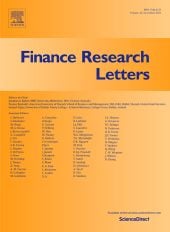
Paper by EDHEC-Risk Associate Researcher Daniel Mantilla forthcoming in Finance Research Letters
Written on 14 Dec 2021.

WE ARE PLEASED TO ENCLOSE AN EDHEC-RISK INSTITUTE RESEARCH ASSOCIATE ARTICLE FORTHCOMING IN Finance Research Letters (IF: 5.596, Scopus Q1, JCR Q1, ABDC: A)
Daniel Mantilla Garcia, PhD, EDHEC Business School
Research Associate, EDHEC-Risk Institute
Assistant Professor of Finance, Universidad de los Andes, Colombia
The paper entitled "Can the portfolio excess growth rate explain the predictive power of idiosyncratic volatility?", co-authored with Juliana Malagon and Julian R.Aldana-Galindo, both from Universidad de Los Andes, unveils a theoretical link between the portfolio excess growth rate (EGR) and two measures of average idiosyncratic volatility (IdVol) and confirm it empirically for the U.S. equity market.
Authors find that the EGR and average IdVol are positively related with subsequent market returns over short horizons. A theoretical analysis of EGR properties explains why the relationship between average IdVol and future portfolio returns changes for different weighting schemes, horizons, and portfolio rebalancing frequencies. Furthermore, it explains why the outperformance of low versus high IdVol portfolios is completely reversed at higher rebalancing frequencies when using equal weights.
Practitioners combining factor investing with diversification strategies, and researchers working on the idiosyncratic volatility puzzle, might be interested in their findings.
TOPICS: Idiosyncratic volatility puzzle, Return predictability, Cross-sectional variance, Excess growth rate
KEY FINDINGS
- Excess Growth Rate (EGR) and idiosyncratic volatility (IdVol) have a direct link.
- EGR and IdVol are positively related with future market returns over short horizons.
- EGR properties explain why predictability varies with horizon and portfolio weights.
- Return of high vs. low volatility EW portfolios is highly dependent on rebalancing.
The role of the Portfolio's Excess Growth Rate (EGR) is so strong that the outperformance of low versus high IdVol portfolios (i.e., the IdVol puzzle) is completely reversed at higher rebalancing frequencies when using equal weights, instead of market-cap weights. The EGR also explains why the predictive power of the average idiosyncratic volatility changes for different weighting schemes, horizons, and portfolio rebalancing frequencies.” says Daniel Mantilla, EDHEC-Risk Institute Associate Researcher.
The paper will be freely available for download 50 days starting now (until January 30) at the following link.
Daniel Mantilla-Garcia is Assistant Professor of Finance at the Universidad de los Andes, in the School of Management in Bogota, Colombia and research associate at EDHEC-Risk Institute in Nice, France. Previously, Daniel worked as head of research at Optimal Asset Management, in Los Altos California, where he focused on designing efficient smart beta and factor-investing strategies with stocks and ETFs. Before that, he headed the R&D department of Koris International in Sophia-Antipolis, France, where he lead a team of researchers in the development of dynamic asset allocation and portfolio insurance strategies for institutional investors. Daniel’s research focuses on portfolio optimization and its application to long-term investments and pension systems design, as well as the study of idiosyncratic volatility and return predictability in the stock market. His research has been published in academic and practitioner journals such as the Journal of Financial and Quantitative Analysis, Finance Research Letters, Journal of Investment Management, Financial Markets and Portfolio Management, International Journal of Theoretical and Applied Finance, and Algorithmic Finance. Daniel holds a PhD in Finance from EDHEC, France, a Master's Degree in Risk & Asset Management (EDHEC) and an Industrial Engineering Degree with a major in Statistics and Operations Research and options in Economics and Applied Mathematics from the Universidad de los Andes


